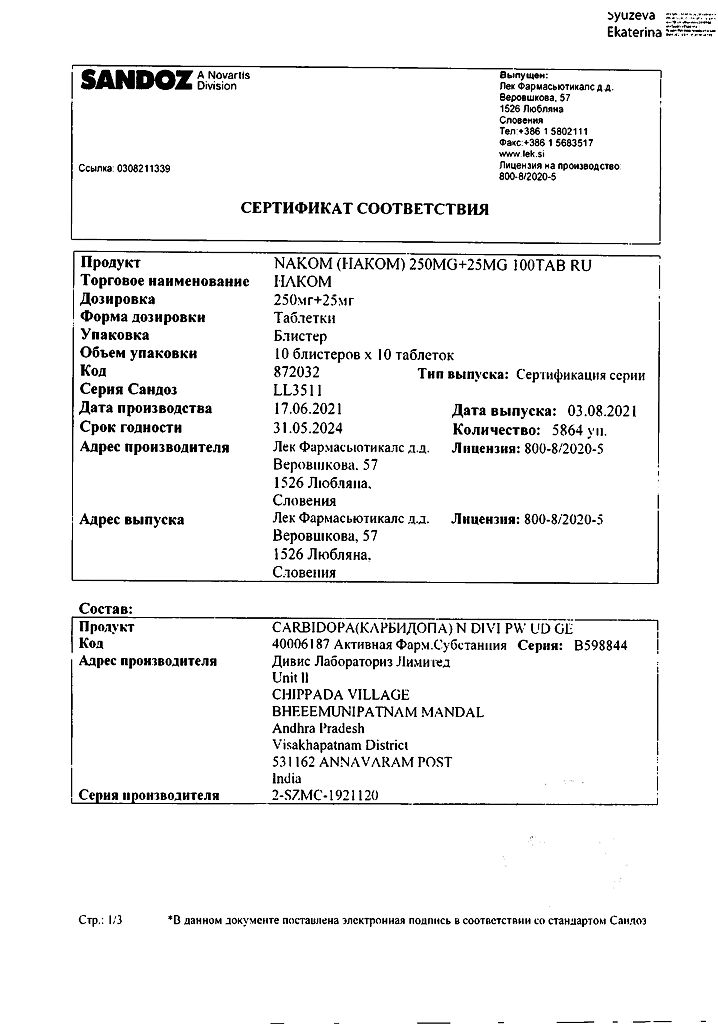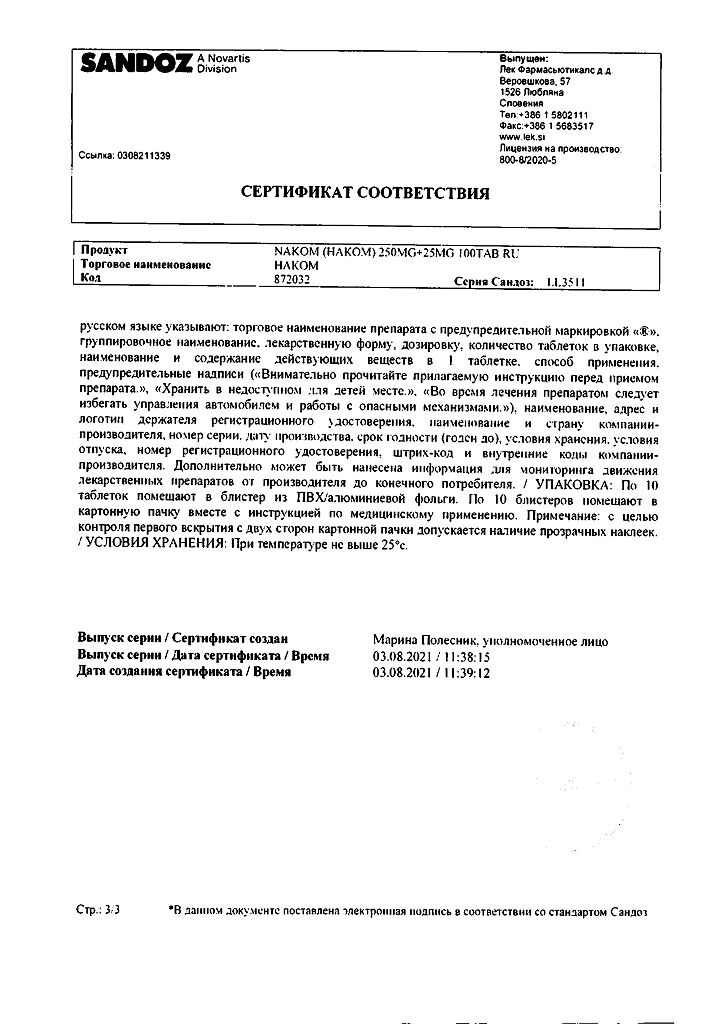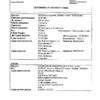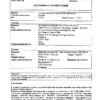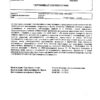No products in the cart.
Nacom, tablets 250 mg+25 mg 100 pcs
€1.00
Out of stock
(E-mail when Stock is available)
Description
Antiparkinsonian combination drug – combination of carbidopa (aromatic 1-amino acid decarboxylase inhibitor) and levodopa (dopamine precursor). It alleviates and relieves symptoms of Parkinson’s disease, including hypokinesia, rigidity, tremor, dysphagia, salivation.
The anti-Parkinsonian effect of levodopa is due to its conversion into dopamine directly in the CNS, which leads to replenishment of dopamine deficiency in the central nervous system (CNS). Dopamine formed in peripheral tissues does not participate in realization of anti-Parkinsonian effect of levodopa (it does not penetrate into CNS) and is responsible for most of levodopa side effects.
Carbidopa is an inhibitor of L-amino acid decarboxylase and decreases dopamine formation in peripheral tissues which indirectly causes increase of levodopa amount reaching CNS.
Nacom® provides adequate reduction of Parkinson’s disease symptoms in more patients. The action of the drug is manifested within the first day of administration, sometimes after the first dose. The maximum effect is achieved within 7 days.
Indications
Indications
Treatment of Parkinson’s disease.
Pharmacological effect
Pharmacological effect
An antiparkinsonian combination drug is a combination of carbidopa (aromatic 1-amino acid decarboxylase inhibitor) and levodopa (a dopamine precursor). Reduces and eliminates the symptoms of Parkinson’s disease, including hypokinesia, rigidity, tremor, dysphagia, drooling.
The antiparkinsonian effect of levodopa is due to its conversion to dopamine directly in the central nervous system, which leads to replenishment of dopamine deficiency in the central nervous system (CNS). Dopamine formed in peripheral tissues is not involved in the antiparkinsonian effect of levodopa (does not penetrate the central nervous system) and is responsible for most of the side effects of levodopa.
Carbidopa, an inhibitor of aromatic L-amino acid decarboxylase, reduces the formation of dopamine in peripheral tissues, which indirectly leads to an increase in the amount of levodopa entering the central nervous system.
Nacom® provides adequate relief of Parkinson’s disease symptoms in a larger number of patients. The effect of the drug manifests itself during the first day from the start of administration, sometimes after taking the first dose. The maximum effect is achieved within 7 days.
Special instructions
Special instructions
Nacom® can be prescribed to patients who are already taking levodopa as monotherapy. However, taking levodopa in single-component form must be stopped at least 12 hours before prescribing Nacom®.
Patients who have previously taken only levodopa may experience dyskinesias because carbidopa allows levodopa to enter the brain more efficiently and therefore more dopamine is produced. If dyskinesia occurs, a dose reduction may be required.
Like levodopa, levodopa/carbidopa can cause involuntary movements and mental disturbances. These reactions are thought to be due to an increase in dopamine levels in the brain following administration of levodopa, and use of levodopa/carbidopa may cause relapse. A dose reduction may be required.
All patients should be closely monitored for the development of depression with concomitant suicidality.
When treating patients who have previously reported or are currently experiencing signs of psychosis, precautions should be taken.
Caution should be exercised during concomitant administration of psychoactive drugs and levodopa/carbidopa). Blepharospasm may be an early sign of overdose in some patients.
As with the use of levodopa, when prescribing Nacom® to patients who have had a myocardial infarction and have a history of atrial, nodal or ventricular arrhythmias, a thorough preliminary examination is necessary.
It is recommended that such patients undergo regular cardiac examinations, especially at the time of the first dose and during the dose titration period.
Levodopa/carbidopa should be used with caution in patients with severe cardiovascular or pulmonary disease, bronchial asthma, kidney disease, liver disease, endocrine disease, or if there is evidence of peptic ulcer disease (due to the possibility of gastrointestinal bleeding from the upper digestive tract) or a history of seizures.
Patients with open-angle glaucoma while taking Nacom® need to regularly monitor intraocular pressure.
Taking MAO inhibitors should be stopped at least two weeks before starting treatment with Nakom®.
With the sudden withdrawal of antiparkinsonian drugs, a symptom complex resembling neuroleptic malignant syndrome (muscle rigidity, increased body temperature, mental disorders and increased concentrations of serum creatinine phosphokinase) may develop. It is necessary to carefully examine patients during a period of sharp reduction in the dose of Nacom® or its discontinuation, especially if the patient is receiving antipsychotic drugs.
Taking levodopa was accompanied by drowsiness and episodes of sudden falling asleep.
Very rarely, sudden falling asleep during daily activities has been reported, in some cases without awareness or warning signs.
If such signs occur, it is recommended to consider reducing the dose.
It is necessary to periodically conduct blood tests; during long-term therapy, periodic monitoring of the functions of the cardiovascular system, liver and kidneys is recommended.
If general anesthesia is required, Nacom® can be taken as long as the patient is allowed to take the drug orally. If treatment is interrupted temporarily, the usual dose can be re-administered as soon as the patient is able to take the drug orally again.
Studies have shown that patients with Parkinson’s disease have an increased risk of developing melanoma, so patients taking Nakom® should undergo regular examinations by a dermatologist.
It is not clear whether the increased risk is due to Parkinson’s disease or other factors, such as drugs used to treat Parkinson’s disease.
Patients receiving dopamine antagonists experience pathological gambling, hypersexuality, compulsive spending (shopping cravings), gluttony and overeating, and increased libido. If the above symptoms develop, dose/treatment adjustment is recommended.
Nacom® is not recommended for the treatment of drug-induced extrapyramidal disorders.
Foods high in protein may interfere with the absorption of the drug.
Impact on the ability to drive vehicles and machinery
In very rare cases, levodopa may cause drowsiness and sudden sleep onset. During treatment with Nacom®, patients should be informed about the possibility of sudden falling asleep.
Patients with drowsiness and who have experienced sudden falling asleep (cases of sudden sleep onset) should refrain from driving vehicles and engaging in potentially hazardous activities that require increased concentration and speed of psychomotor reactions.
Active ingredient
Active ingredient
Levodopa, Carbidopa
Composition
Composition
1 table contains:
active substances:
Levodopa – 250 mg,
carbidopa – 25 mg;
excipients:
pregelatinized starch – 45 mg;
corn starch – 6.5 mg;
blue dye (indigotine E132) – 0.-72 mg;
magnesium stearate – 4.2 mg;
MCC – up to 380 mg.
Contraindications
Contraindications
• Hypersensitivity to the components of the drug;
• simultaneous use of non-selective monoamine oxidase inhibitors (MAO);
• an interval of less than two weeks after stopping taking MAO inhibitors;
• angle-closure glaucoma;
• melanoma or suspicion of it;
• skin diseases of unknown etiology;
• age under 18 years (the safety of the drug in young and middle-aged children has not been established);
• lactation period.
With caution
• myocardial infarction with rhythm disturbances (history);
• chronic heart failure and other severe diseases of the cardiovascular system;
• severe lung diseases, including bronchial asthma;
• epileptic and other convulsive seizures (history);
• erosive and ulcerative lesions of the gastrointestinal tract (risk of bleeding from the upper gastrointestinal tract);
• diabetes mellitus and other decompensated endocrine diseases;
• severe renal and/or liver failure;
• open-angle glaucoma;
• extrapyramidal reactions caused by the use of the drug;
• pregnancy.
Side Effects
Side Effects
According to the World Health Organization (WHO), adverse effects are classified according to their frequency as follows: very common (≥1/10), common (≥1/100, <1/10), uncommon (≥1/1000, <1/100), rare (≥1/10000, <1/1000) and very rare (<1/10000); frequency unknown – the frequency of occurrence of events cannot be determined based on available data.
The most common side effects are dyskinesias, including choreiform, dystonic and other involuntary movements, as well as nausea. Early signs on the basis of which a decision may be made to reduce the dose may include muscle twitching and blepharospasm.
Benign, malignant and unspecified neoplasms, including cysts and polyps
frequency unknown: malignant melanoma.
From the hematopoietic organs: rarely: leukopenia, anemia (including hemolytic), thrombocytopenia, agranulocytosis.
From the immune system: rarely: angioedema.
Metabolic disorders: often: anorexia; frequency unknown: weight loss or gain, edema.
From the mental side: often: sleep disturbances, including nightmares, hallucinations, depression (including with suicidal intentions), confusion; uncommon: agitation; rarely: psychotic reactions, including delusions, and paranoid thinking, increased libido.
Patients receiving dopamine antagonists experience pathological gambling, hypersexuality, compulsive spending (shopping cravings), gluttony and overeating, and increased libido. The reactions listed above generally disappeared after reducing the dose of the drug or stopping treatment.
frequency unknown: anxiety, disorientation, euphoria, insomnia, bruxism.
From the nervous system:
very often: dyskinesias, including chorea, dystonia and other involuntary movements;
often: episodes of bradykinesia (“on-off” syndrome), dizziness, paresthesia, drowsiness, including less often daytime drowsiness and episodes of sudden falling asleep;
uncommon: syncope;
rarely: dementia, convulsions;
frequency unknown: ataxia, hand tremors, extrapramidal disorders, neuroleptic malignant syndrome, muscle twitching, headache, decreased intellectual acuity, trismus, activation of latent Bernard-Horner syndrome, insomnia, nervousness, euphoria, numbness, fainting, falls, gait disturbances, feelings of irritation, compulsions.
The development of seizures has been reported, but a cause-and-effect relationship with taking Nakom® has not been established.
From the senses: frequency unknown: blepharospasm, diplopia, blurred vision, dilated pupils, oculogyric crises (tonic convulsions of the external muscles of the eyeball).
From the cardiovascular system: often: rapid heartbeat, orthostatic reactions, including episodes of decreased blood pressure; rarely: arrhythmias, phlebitis, increased blood pressure; frequency unknown: hot flashes, hyperemia.
From the respiratory system: often: shortness of breath; frequency unknown: hoarseness, abnormal breathing pattern.
From the gastrointestinal tract: often: vomiting, diarrhea; rarely: gastrointestinal bleeding, exacerbation of duodenal ulcer, darkening of saliva; frequency unknown: dryness of the oral mucosa, drooling, dysphagia, abdominal pain, constipation, bloating, dyspepsia, burning sensation of the tongue, bitterness in the mouth, nausea, belching.
From the skin: uncommon: urticaria; rarely: itching, hemorrhagic vasculitis (Henoch-Schönlein purpura), alopecia, rash, darkening of sweat; frequency unknown: increased sweating.
From the urinary system: rarely: darkening of urine; frequency unknown: urinary incontinence, urinary retention.
From the musculoskeletal and connective tissue side: uncommon: muscle cramps; frequency unknown: muscle twitching.
From the reproductive system: frequency unknown: priapism.
General disorders and disorders at the injection site: often: chest pain; frequency unknown: asthenia, edema, weakness, malaise, fatigue, neuroleptic malignant syndrome.
Laboratory indicators:
frequency unknown: increased activity of alkaline phosphatase, aspartate aminotransferase, alanine aminotransferase, lactate dehydrogenase, increased bilirubin, plasma urea nitrogen, plasma urea, hypercreatininemia, hyperuricemia, positive Coombs test.
Decreased hemoglobin and hematocrit levels, hyperglycemia, leukocytosis, bacteriuria, and hematuria have been reported.
Drugs containing carbidopa and levodopa may cause a false-positive reaction for ketone bodies in urine if test strips are used to determine ketonuria. This reaction will not change after boiling urine samples. False-negative results can be obtained when using the glucose oxidase method for determining glycosuria.
Interaction
Interaction
When used simultaneously with antihypertensive drugs, it is necessary to adjust the dose of the latter due to the risk of developing orthostatic hypotension.
When levodopa is used simultaneously with monoamine oxidase inhibitors (MAO) (except for MAO-B inhibitors), circulatory disorders are possible (taking MAO inhibitors should be discontinued at least 2 weeks before starting the drug).
This is due to the accumulation of dopamine and norepinephrine under the influence of levodopa, the inactivation of which is inhibited by MAO inhibitors, and a high likelihood of developing agitation, increased blood pressure (BP), tachycardia, facial flushing and dizziness.
Iron salts may reduce the bioavailability of levodopa and carbidopa; the clinical significance of this interaction is unknown.
With simultaneous use of levodopa with β-adrenergic agonists, ditilin and drugs for inhalation anesthesia, the risk of developing heart rhythm disturbances may increase.
D2 dopamine receptor antagonists (for example, derivatives of butyrophenone, diphenylbutylpiperidine, thioxanthene, phenothiazine, risperidone), as well as isoniazid, reduce the therapeutic effect of levodopa.
There are reports of phenytoin and papaverine blocking the beneficial therapeutic effects of levodopa.
Lithium preparations increase the risk of developing dyskinesia and hallucinations.
Methyldopa increases side effects.
Concomitant use of tubocurarine increases the risk of arterial hypotension.
Absorption of levodopa may be impaired in patients on a high protein diet because levodopa competes with certain amino acids.
Carbidopa interferes with the action of pyridoxine hydrochloride (vitamin B6), which accelerates the metabolism of levodopa to dopamine in peripheral tissues.
Overdose
Overdose
In case of overdose, the severity of the symptoms listed in the “side effects” section increases.
Treatment: gastric lavage, taking activated carbon; Careful observation and electrocardiographic monitoring should be ensured in order to timely detect arrhythmias, and, if necessary, adequate antiarrhythmic therapy should be carried out.
Measures for acute overdose of Nacom® are basically the same as for acute overdose of levodopa. It should be noted that pyridoxine is not effective in reversing the effects of Nacom®.
It is also necessary to take into account the concomitant therapy that the patient receives along with the drug Nakom®.
Storage conditions
Storage conditions
In a dry place, protected from light, at a temperature not exceeding 25 °C
Shelf life
Shelf life
3 years
Manufacturer
Manufacturer
Lek d.d., Slovenia
Additional information
| Shelf life | 3 years |
|---|---|
| Conditions of storage | In a dry, light-protected place at a temperature not exceeding 25 °C |
| Manufacturer | Lek d.d., Slovenia |
| Medication form | pills |
| Brand | Lek d.d. |
Related products
Buy Nacom, tablets 250 mg+25 mg 100 pcs with delivery to USA, UK, Europe and over 120 other countries.


